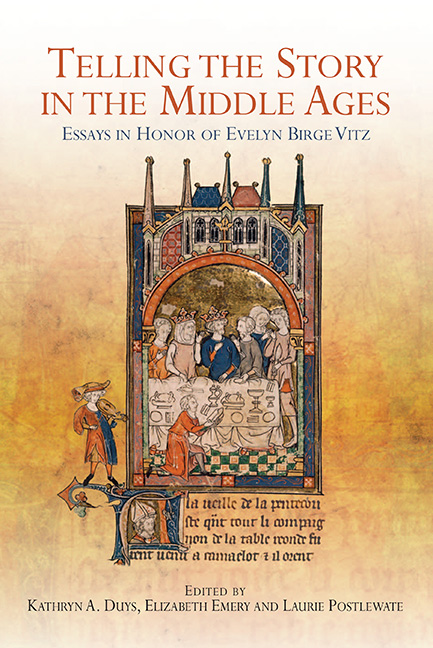Or, entendez! Jacques Tahureau and the Staging of the Storytelling Scene in Early Modern France
Published online by Cambridge University Press: 17 June 2021
Summary
Well into the early modern period and beyond, French authors such as Martial d’Auvergne and Marguerite de Navarre remained devoted to the literary representation of oral storytellers. Indeed, far from producing texts with writerly, externalized narrators attached to them, they created images of storytelling circles, scenes that remind readers of how medieval storytelling was thought to have taken place: groups of people, gathered together, orally exchanging stories either with or without the physical presence of a book. Such works provide a fascinating blend of text and represented voice: printed pages which appear to speak, on which nearly all the words are representations of oral discourse, whether the transmission of stories or the exchange of conversation in response to those stories.
Elsewhere I have discussed the depiction of the storytelling scene in such texts as the Cent nouvelles nouvelles, the Évangiles des quenouilles, the Heptaméron, the Caquets de l’Accouchée, Martial d’Auvergne's Arrêts d’Amour and Noël Du Fail's Propos rustiques. However, even a text such as Jacques Tahureau's Dialogues (published 1565), traditionally classified as belonging to the genre of the humanist dialogue, and which does not therefore immediately appear to fit into an analogous pattern, is mediated by an overarching and highly oralized narrative presence on the page. I will show here, therefore, that beyond merely demonstrating the enduring influence of the medieval storytelling circle in the French early modern period, such a text revises our understanding of that influence, dissolving generic boundaries in unexpected ways. It expands our notion of storytelling and participates in many of the paradigms and techniques of storytelling with which we are familiar from the Middle Ages, a world first illuminated for me through the close and enriching work I embarked upon under the guidance of Timmie Vitz.
Openly competing with Boccaccio to create the French Decameron, the anonymous author of the Cent nouvelles nouvelles (1462), Philippe de Vigneulles (author of another early sixteenth-century Cent nouvelles nouvelles) and Marguerite de Navarre (Heptaméron, 1540s), among others, sought to inscribe the storyteller's voice on the page, a technique also seen in late medieval texts as diverse as the anonymous Évangiles des quenouilles (1466–74) or Martial d’Auvergne's Arrêts d’Amour (1460s). However, this technique is not one that disappeared from use with the passage from the Middle Ages to the Renaissance, and further into the early modern period.
- Type
- Chapter
- Information
- Telling the Story in the Middle AgesEssays in Honor of Evelyn Birge Vitz, pp. 111 - 122Publisher: Boydell & BrewerPrint publication year: 2015



